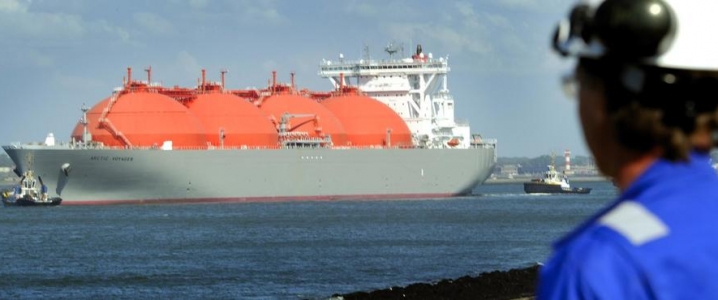Even if you just casually follow global energy news, you can’t help but notice that liquefied natural gas prices (LNG) in Asia keep dropping. Last week, prices for the super-cooled fuel dropped to their lowest point in nearly 19 months, due to pressure as more supply hit the market and buying interest remained low. LNG procurement historically peaks during cold winter months before tapering off at the end of January and beginning of February as spring approaches. However, total shipments of LNG into Japan, China, South Korea and Taiwan were at about 15.94 million tonnes in February, down nearly 19 percent from the previous month, Reuters reported, citing shipping data from Refinitiv Eikon showed.
Spot prices for April delivery to Northeast Asia LNG-AS were trading around $6.00 per million British thermal units (MMBtu). That’s down 20 cents from the previous week at the lowest since Aug. 4, 2017, when prices hit $5.90 per MMBtu. Spot prices for the fuel breached $20/MMBtu in February 2014, amid a then somewhat limited supply of the fuel and as gas demand in Japan, still grappling with the loss of nuclear power in the aftermath of the 2011 Fukushima nuclear disaster, was still spiraling upward. Since then, a supply overhang has persisted in global LNG markets due to more projects coming online in both Australia the U.S., and elsewhere.
Traders said on Friday that spot demand from China, now the world’s second-largest LNG buyer, remained soft. Last winter, China’s LNG spot procurement reached record levels as the country dealt with increased gas demand amid a colder than usual winter. This year, however, Northeast Asia, which accounts for more than 70 percent of global LNG demand, has experienced warmer than usual temperatures. Moreover, before the winter season, to avoid a repeat of last year when China was caught flat-footed without enough gas for both residential and industrial users, the country filled up storage to record capacity in the months prior to the winter season. Related: Lower Buying Appetite May Jeopardize New LNG Projects
Commenting on current prices, a China-based industry source also said that “The (Lunar New Year) holidays are over and some industries are back online, but I think (demand) will be the same as usual, though it’s still difficult to say which way it will go.”
Arbitrage opportunities
Now markets will wait for warmer temperatures as summer approaches. High summer temperatures can have direct and indirect effects on natural gas prices. Hot weather tends to increase the demand for air conditioning in homes and buildings, which generally increases the power sector's demand for natural gas. During high demand periods, natural gas prices on the spot market may increase sharply if natural gas supply sources are relatively low or constrained. In addition, increases in natural gas consumption by the electric power sector during the summer may lead to smaller-than-normal injections of natural gas into storage and to lower available storage volumes in the winter, which could affect prices.
Historically, LNG prices have been higher in Asia than in Europe, usually by several dollars per MMBtu. Now, however, LNG prices in Asia and Europe are reaching parity, an unusual development. An S&P Global Platts report said Friday that a retreat in the JKM Asian LNG price for delivery in April has pushed its value to almost parity against the Dutch TTF gas price, suggesting Atlantic Basin-based spot LNG suppliers could see a higher incentive to deliver spot cargoes into Europe in the short term rather than destinations in Asia. The JKM or Japan-Korea-Marker is an LNG pricing benchmark price assessment for spot physical cargoes delivered ex-ship into Japan, South Korea, China, and Taiwan.
By Tim Daiss for Oilprice.com
ADVERTISEMENT
More Top Reads From Oilprice.com:
- Is This The End Of A Record-Breaking Oil Rally?
- Rebound Rally In Oil Is Still Gaining Momentum
- China Says Massive Shale Oil Reserves Found In North


















